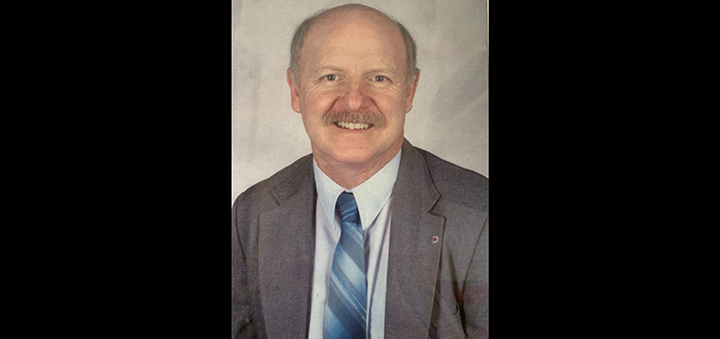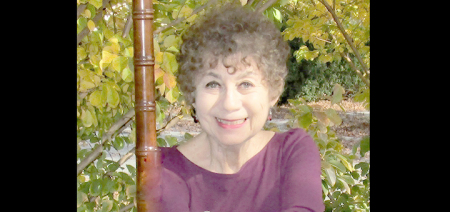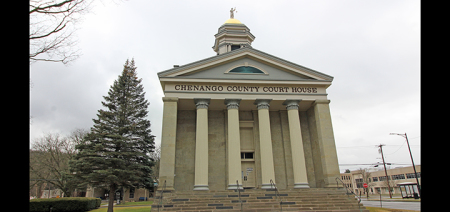Norwich High School Hall Of Distinction: Tom Shedd, Class Of 1971
Published:
April 11th, 2025
 Tom Shedd, Norwich High School Class of 1971. (Submitted photo)
Tom Shedd, Norwich High School Class of 1971. (Submitted photo)
The Norwich High School (NHS) Hall of Distinction Committee has selected the first six NHS alumni to be included in the Hall of Distinction.
Individuals selected have made outstanding contributions to their chosen fields, including community services, the arts, medical professions, military service, and more, with their contributions having a distinctive impact on a local to global level.
Tom Shedd: Environmental scientist and college professor
By Kathleen Coates
Tom Shedd's passion for fishing and water started with being raised in Norwich near the Chenango River. As a teenager, he delivered newspapers and worked at the O&W supermarket until he graduated high school in 1971, and went to college that fall at Oneonta State University.
After graduating college, Tom joined the Army and was stationed at Walter Reed Army Institute of Research. His work there involved finding ways to keep parasites from infecting soldiers in the tropics.
While working at Walter Reed Army Institute of Research, he completed a master's degree in environmental science from Hood College. Tom then transferred to Fort Detrick, MD to work in the fields of aquatic toxicology, fish behavior, and cell biology for the US Army Center for Environmental Health Research (USACEHR).
In addition, Tom became an adjunct professor at Hood College, teaching graduate courses in Pollution Biology and Freshwater Ecology for nine years. During his career, Tom managed to get married to his lovely wife, Donna, and they have four children: Brian (hydro geologist, father), Gregory (high school biology teacher, college tennis coach, director of a retreat, father), Caroline (vocal performance, dog trainer, mother), and Michele (environmental scientist, mother), resulting in nine grandchildren.
Tom’s work over the years, prior to retirement from the USACEHR, was to develop new aquatic toxicity test methods to include field deployment and aquatic laboratory management for toxicity testing. Tom’s work spans both basic and applied research projects, which are supported by in-house and extramural research that he supervised in the specialty area of aquatic toxicology/biology.
Tom is an expert in the fields of aquatic toxicity test method development and field deployment, with over 20 years of deployment experience. He has had a substantial impact by developing unique aquatic toxicity test methods to monitor effluents and drinking water for developing toxicity.
Two significant patents are associated with toxicity test methods he has developed: U.S. Patent 6,058,763, “Apparatus and Method for Automated Biomonitoring of Water Quality” (issued) and “Fish Hatching Method and Apparatus” (issued). The methods Tom developed have had a substantial impact on the scientific community. Additionally, nine patents in total have been issued.
After the September 11 events, the Medical Research and Materiel Command (MRMC) Commanding General requested that an Automated Biomonitoring System be deployed on the source water for Fort Detrick’s drinking water supply. Aberdeen Proving Ground performed a review of the deployment of automated biomonitoring there, which concluded that this technology was essential to ensure the quality of effluent being discharged to the Chesapeake Bay.
The US EPA National Risk Management Research Laboratory (Water Supply and Water Resources Division) and the New York City Department of Environmental Protection (Bureau of Water Supply, Drinking Water Quality Control) requested collaboration on the use and deployment of the automated biomonitoring technology.
Tom developed interagency and cooperative research agreements with these agencies to deploy monitoring systems. Collaborations with universities, federal, state, and local governments allowed the use of USACEHR biomonitoring systems when needed. These monitoring systems significantly reduced the operational cost for effluent monitoring and improved drinking water security.
Additional deployments of water biomonitoring systems developed at USACEHR were put in place to provide additional security at drinking water intakes along the Potomac River for the Metropolitan Washington Council of Governments (MWCOG). New York City also had USACEHR install systems at their water intakes.
Prior to Tom’s retirement, there was a research push at USACEHR to develop cell-based monitoring systems to provide rapid detection of toxic substances in water. Several unique cell characteristics for the development of a portable, cell-based toxicity sensor for drinking water protection were achieved.
To this day, the aquatic test methods developed at the Army laboratories that Tom managed are being used to maintain environmentally clean water and water security. Tom has received several Army Medical Command, Congressional, and Presidential awards for his method development work with the Army.
Currently, Tom is involved in volunteer programs to include 4H clubs and New York State Citizens Statewide Lake Assessment Program (CSLAP). The CSLAP allows Tom to stay current with water monitoring strategies that monitor for changes in water quality that affect drinking water sources. Tom is never far away from water and loves to fish, especially for bass.
The NHS Hall of Distinction Committee aims to recognize and commemorate alumni of Norwich high schools who have made outstanding in the areas of, but not limited to, profession, community service, commerce, religion, and art. This Hall of Distinction established in 2024 is intended to serve as a vision and source of pride for our community and student body.
To nominate an NHS alum for the Hall of Distinction, complete the nomination form found at norwichcsd.org/documents/district/211781 and submit to NCSD Event Coordinator Rich Turnbull at rturnbull@norwichcsd.org, or dropped off at the District Office at 89 Midland Drive in Norwich no later than May 1, 2025.
Comments







